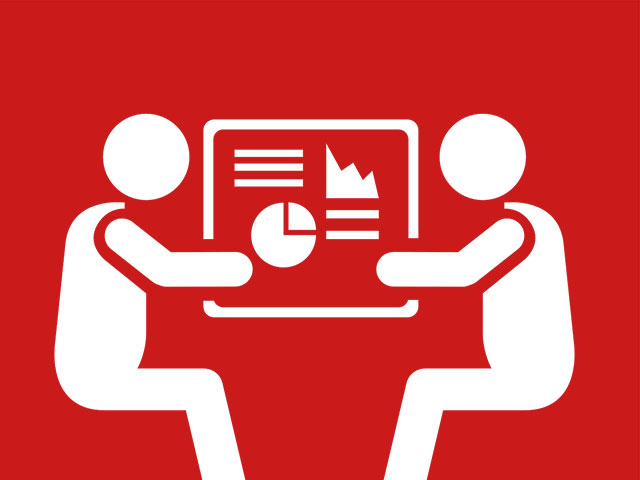
4 Webinar Metrics B2B Companies Shouldn’t Miss
Webinars deserve a very special position among B2B marketing tools. Well-designed webinars represent a perfect channel of communication for B2B companies eager to build industry reputation, raise awareness, and drive sales in the long run.
This is exactly why over 60% of marketers are using webinars as part of their content marketing programs, while more than 70% of B2B sales leaders claim it’s the best tactic to generate quality leads.
You are probably wondering right now: What makes webinars such a powerful marketing model? To answer this question, we need to remind you that B2B customer journey usually lasts longer than its B2C counterpart because business clients don’t make impulse decisions.
On the contrary, they carefully analyze each offer and expect you to prove competence and professional authority. A majority of B2B customers are not decision makers, so they also need to provide colleagues with solid evidence before making the final decision. In such circumstances, webinars become a quintessential B2B sales driver.
However, it doesn’t mean that every webinar generates the same result. You need to be cautious and determine key performance indicators in order to measure success. This post will show you 4 webinar metrics B2B companies shouldn’t miss.
1. Registrations and Attendance Rate
You can’t hope for a successful webinar unless you accumulate enough registrations. The first thing you need to do is to figure out why some people don’t respond to your landing page, social invitations, and email campaigns.
John Villanueva, a B2B strategist at UK Best Essays, told us what could go wrong here: “Perhaps you are not using the best call to action or the landing page design is not effective? Maybe you are not addressing the right audience? You could also build a registration form with too many entry fields, which chases away potential applicants”.
When you discover the problem and raise the number of registrations, you need to check the attendance rate. Namely, the number of people who register to attend a webinar is usually much lower than the actual number of attendees. According to some studies, an average registrant-to-attendee conversion rate is 40%.
If you are not happy with results, you should reach out to all registrants upon webinar completion and send them a brief summary of conclusions. You could also give them the opportunity to engage by asking questions or buying the full report. In each case, the point is to prove they made a mistake not showing up.
2. Audience Retention
Audience retention is one of the key metrics you need to monitor. Most B2B webinars are struggling to keep the attendees focused, so they lose a lot of spectators along the way. This is critical for the success of your marketing tactic because the content of your webinar should eventually become the sales driver.
The problem usually lies in poor presentations. Webinar must run smoothly and without interruptions, while the presenter must be skilled and passionate. The most common reasons for low retention are technical issues, boring delivery, and too much promotion.
You can fix all these problems quickly, but you need to detect them first. This is why audience retention is a crucial metric, but this is also how we get to the next indicator on our list.
3. Audience Engagement
Webinar presenters who really manage to inspire their audience and make them interested in a subject always notice a high level of engagement and interaction. It is by far the most credible indicator of webinar success. But how do you measure audience engagement?
The answer is simple – wait for the final Q&A session and see how your attendees react. If they keep quiet, you have to change something very quickly. But if they start asking you all sorts of questions related to the webinar theme, you know you are on the right track.
However, keep in mind that most attendees are too shy to start asking questions. In this case, you should encourage them by initiating a debate on your own. The second option is to politely ask someone to break the ice and then you’ll initiate an avalanche of other questions.
4. Leads and Conversions
When it comes to the consequences of a webinar, most B2B companies look strictly at leads and conversions. If you start the promotional campaign early and really inspire the audience, you can consequently expect to generate more leads.
On the other side, conversion is the ultimate step in the process. Around 15% of attendees usually convert into a sale of your product or service, but this number depends directly on the quality of the content, the engagement of your attendees, the desirability of the product, and an irresistible offer.
A presenter plays the major role in that respect because he is the one who should convince attendees that your offer is too good to miss. His job is to be subtle but persuasive, maximizing the sales potential of a product.
CONCLUSION
A webinar is a powerful marketing tool for B2B organizations. It has the potential to influence your business on multiple levels, from raising awareness to lead generation. You just need to use the right KPIs to make sure that your webinars are successful.
In this post, we explained to you 4 webinar metrics B2B companies shouldn’t miss. Add our indicators to the post-webinar analysis and you will obtain much more precise data about this B2B marketing tactic.
Warren is a marketing enthusiast and a blogger at UK Best Essays, who loves music. If he doesn’t have a guitar in his hands, he’s probably embracing new technologies and marketing techniques online! You can meet him on Twitter and Facebook.
what do you think?